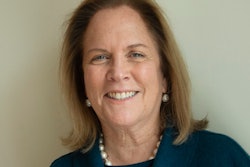I’m proud to be the first woman in my Latinx family to complete a college degree and the first person to finish a master’s degree, and that left a seemingly easy goal for me to set: I want to complete a doctoral degree before hitting the big 5-0. And I hoped the journey would remind me of why I entered the field of higher education in the first place. With that in mind, I applied to programs with content that would be of assistance in my career as a communications consultant. I received my acceptance notifications in late March 2020. My educational opportunities opened up just as the world shut down.
Even though the pandemic threw a wrench in my plans, I figured I was set up for success. I work with faculty and staff daily and spend time with college leaders discussing the latest issues in higher ed and student concerns on campus. Based on what I struggled to learn as an undergraduate, I knew to apply to and enroll in a program that felt like a fit—and how to figure out what that meant for me. I knew to read the syllabus carefully to prevent myself from being the subject of a snarky faculty Tweet and to get to know the librarians who could help with research by finding peer-reviewed gems I might not find on my own. I knew personal relationships would be essential for success, including making connections during office hours with faculty and between classes with my peers. I was ready.  Teresa Valerio Parrot
Teresa Valerio Parrot
It’s important for me to note that I’d not stepped foot in a classroom as a student—not guest speaker or lecturer—for nearly 20 years. When I last was a student, grades were posted on community bulletin boards and my few online classes (which at the time were considered high tech, not the norm), had very rudimentary functionality. When I last performed research, I used computer terminals in the library to look up the Dewey Decimal number for relevant books, wrote the numbers down with little golf pencils on scratch pieces of paper, walked across the library to find the books and then checked them out or photocopied the relevant pages using actual coins as payment. It has been a transition for me to make a paperless shift to reading document downloads and using Noteability for notetaking. It became apparent a week into my program that printing readings and assignments wasn’t sustainable, yet I still find myself nostalgically buying school supplies. So much has changed.
If ever I was thankful for the disruption of the pandemic, it was during the moments I needed my college-aged daughter to help me navigate my new world and understand the technology that serves as higher education’s backbone. I wouldn’t have had in-person access to her help if she had been studying on campus rather than trudging through Zoom classes like I did. As an industry we talk about how overwhelming it is for students to learn to navigate a college system, but as we court adult students to return to the classroom, we should think about reorientation for technology as well as sharing how to succeed through the coursework. For this reason, I’ve shifted my communications counsel to clients to suggest incorporating definitions and resources in new ways to provide guideposts to adult students. After all, not everyone has access to a younger student’s kindness.
I’ve had to learn how to navigate Canvas for my courses and encourage professors to invest the time in building out intuitive and quality Canvas pages. Having modules that take the guesswork out of assignments, due dates and expectations means that I can focus on the work itself. And I can’t stress enough how strongly I encourage enabling “confetti mode” in Canvas. Each time I turn in a major assignment, my husband and I celebrate the confetti that fills my screen to mark the completion of a course milestone. The silliness of the confetti showering and celebration allow for levity in a long and stressful process for my cohort colleagues and me. Canvas confetti means we are one step closer to our degrees.















